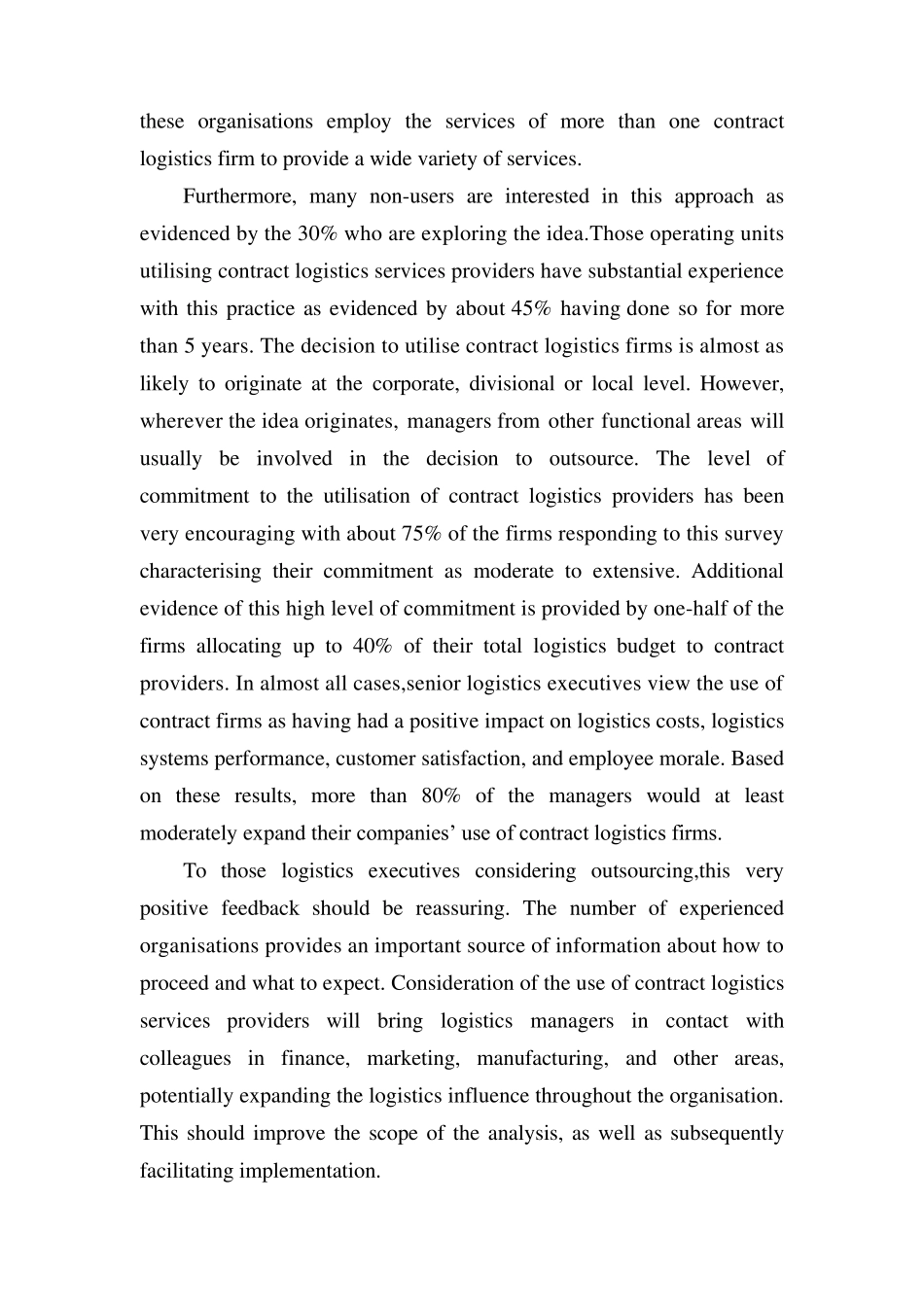The use of third party logistics services M.S. Sohail , A.S. Sohal With the globalisation of businesses and the consequent competitive pressures, there has been an increasing dependence on the ability of organisations to deliver customer-adapted products all over the world quickly and on time. This has placed a number of demands on the logistics system and has become a rapidly developing area of investigation. In fact, it has been referred to as the last frontier for the development of strategic competitive advantage (Hum, 2000). To gain a competitive advantage, many organisations are seeking to manage their logistics operations strategically, but realise that they lack the core competencies and are increasingly seeking to outsource their logistics activities (Hum,2000). Apart from this, another important development that is making an impact on the organisations is the increased emphasis on time-based competition (Bhatnagar et al., 1999). Broadly, time-based competition refers to the speed with which products can be manufactured, delivered to the market and serviced. Much has been written in recent years about outsourcing logistics activities. There have been various terms used to describe this phenomenon such as logistics alliance (Bowersox, 1990), operational alliances in logistics (Laarhoven and Graham, 1994), contract logistics (Kearney, 1995), contract distribution (Wilson and Fathers, 1989) and third party logistics (Lieb and Randall, 1996). However, third party logistics (3PL) has been the term more widely used in recent times. Given the growing importance of logistics outsourcing, the extent of its usage has been widely examined in the USA (Lieb and Randall, 1996). Sheffi (1990) describes how the 3PL ...


